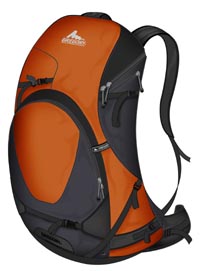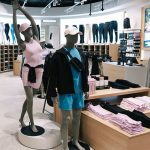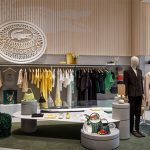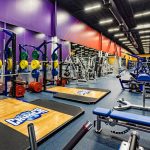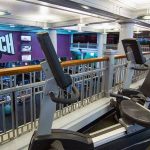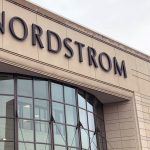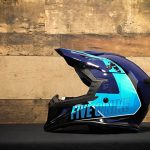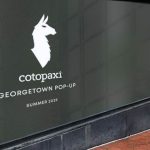No matter how big you get, business is rough when your customers are either dying or broke.
Just ask Ashworth Inc. and Callaway Golf Co. The Carlsbad companies are top players in the beleaguered golfing industry, and significant growth has been hard to come by. So, searching for sales in a shrinking market, two years ago they joined forces, inking a licensing agreement that allowed Ashworth, best known for its golf shirts, to sell a Callaway line of apparel both here and overseas.
“Callaway helps Ashworth by enabling them to gain market share in a way that would be more difficult with just one brand, and for Callaway it’s a way to extend into lifestyle products, to be able to appeal to individuals who dont necessarily play the game of golf,” said Ron Drapeau, Callaway’s chairman and chief executive.
Reaching beyond golfers has been a top priority for many businesses in golf, a game that has seen its popularity fall with the economy. Those problems have been amplified by the war in Iraq and its effect on travel.
For Ashworth and Callaway, the licensing deal is starting to pay off. In the most recent quarter ended Jan. 31, Ashworth reported revenues jumped 30 percent to $27 million, compared with the year-earlier quarter, mostly due to Callaway product.
At its annual meeting recently, Ashworth told shareholders sales are expected to grow 14 percent to $146 million in fiscal 2003. Net income was forecast to grow to $7 million, up from $2.5 million. “Ive gone public with this: We believe the Callaway brand could be as big as Ashworth,” said Randy Herrel, Ashworth’s chief executive.
Executives from Callaway and Ashworth are mum on deal specifics. Drapeau said Ashworth pays Callaway an annual license fee, which is calculated as a percentage of revenue. The size of the fee and the terms of the license, which extends until 2009, have not been disclosed.
“That would be very nice to know,” said Tim Conder, an analyst covering Callaway for A.G. Edwards & Sons Inc.
No ugly shirts Ashworth was founded in Carlsbad in the 1980s by San Diego entrepreneurs Jerry Montiel and John Ashworth, on the notion that golf shirts were too ugly.
The pair made soft colored, cotton shirts to appeal to younger golfers who werent interested in the more traditional and often ridiculed polyester clothes. At first the shirts were sold exclusively in pro shops and country clubs.
Herrel, formerly president of surfwear company Quiksilver Inc., took over as chief executive in 1996 and is generally credited with turning Ashworth into a premier golf brand.
The company has had the most popular golf shirts for the past five years, according to the Darrell Survey consumer report. Ashworth had a 14 percent market share in 2002, beating venerable brands like Polo, 10.1 percent; Izod, 7.1 percent; and Nike, 6.8 percent. Callaway, by contrast, took just 1.6 percent of the shirt market.
Still, Ashworth has had trouble reaching out to non-golf customers. The company’s sales have been flat for two years, and its rosy forecasts for 2003 are predicated on the success of the Callaway line.
“(Callaway clothes) will provide most of the growth for the next couple years,” said Ian Corydon an equity analyst with B. Riley & Co. who owns Ashworth stock.
If there is a looming cloud for Ashworth, it is that Callaway product will take away from its own brand, cannibalizing the company’s existing revenue stream. “That’s the major risk, that people will switch off,” Corydon said. So far that hasnt been the case, and Ashworth has been using price to differentiate its two Callaway lines. The most expensive shirts, dubbed the Callaway Collection, have a retail cost between $70 and $100, about as much as ultra high-end brands such as Bobby Jones.
The Callaway Sport line costs around $40, competing with brands like Nike and Adidas; Ashworth shirts retail between $55 and $80, about as much as Polo.
Critics have long charged Callaway has been unable to fully exploit its brand name, one of the most recognizable in golf, beyond its core club business. Competitors such as TaylorMade and Nike, meantime, have chipped away at its share of the driver market, and forays into other areas have been mixed.
The line of Callaway golf balls, launched in 2000, has so far been an earnings drag, but its putter business has been a success. Callaway generated $792 million in revenue last year, down from $838 million in 2000, a banner year.
Prior to Ashworth, Callaway’s apparel license was held exclusively by Nordstrom, the Seattle-based chain with just 80 retail stores. “We definitely had people asking us for Callaway” before it was widely available, said Rowdy Bank, store manager of The Golf Mart in Mission Valley.
Analysts estimate Nordstrom sold between $20 million and $30 million in Callaway gear each year. Ashworth is hoping to sell more than $100 million within seven years. “Your growth tops out real quick when you license to one department store,” Corydon said.
Now, Callaway is available in about 100 domestic retail stores, plus 2000 “green grass” outlets stores at the links. Ashworth, by contrast, is sold in about twice as many retail and course shops.
In financial circles, rumors abound about what the two companies ultimate plans are for the partnership. Economic problems aside, golf is also facing longer-term issues about its ability to appeal to new players and grow.
Total rounds played have fallen in three of the last five years, according to research firm Golf Datatech, even as new courses have sprouted up.
For starters, the game is difficult, time consuming and expensive. In addition, new rules from the Professional Golfers Association that put caps on technological innovation could inspire golf companies to slow their production of high-tech products that make the game more accessible to newcomers.
All of which has led to speculation there could one day be a Callaway/Ashworth combination to offset weaknesses in the companies respective businesses. “The hope with a lot of people is that Callaway license to Ashworth, Ashworth builds a market in Callaway, and then Callaway buys Ashworth,” Corydon said.
That’s a suggestion executives at both Callaway and Ashworth are tired of hearing. “Many people have asked us that, but apparel and hard goods are two completely different businesses,” Herrel said. Still, he conceded such a combination “would make sense if we want to build the brands bigger than golf.”

